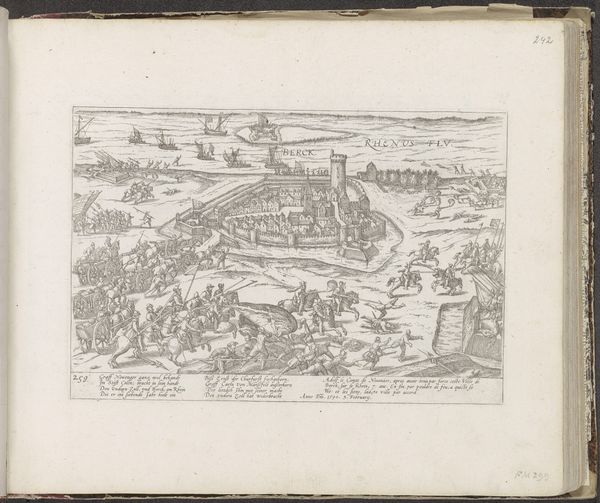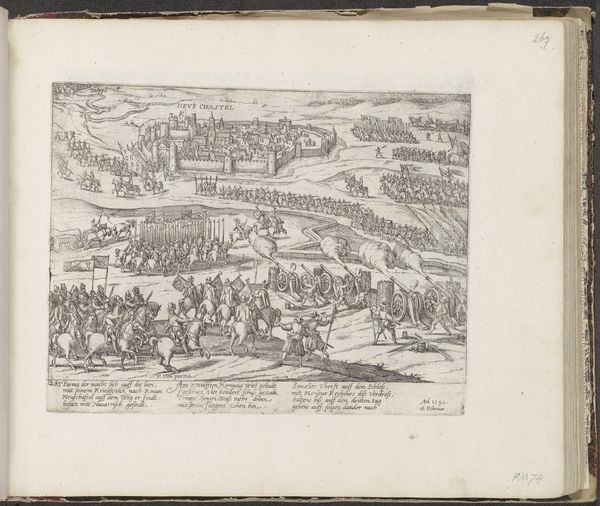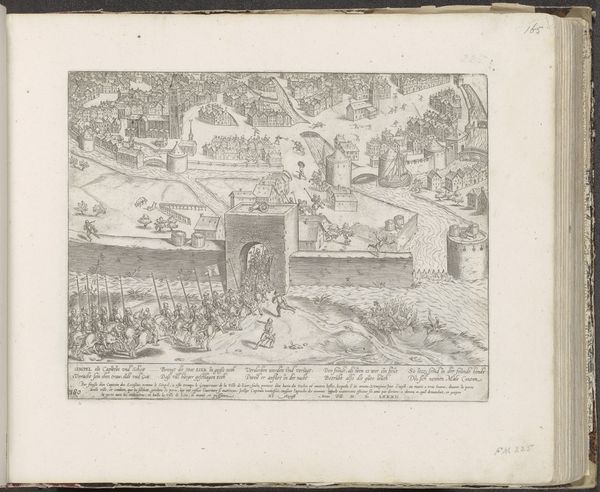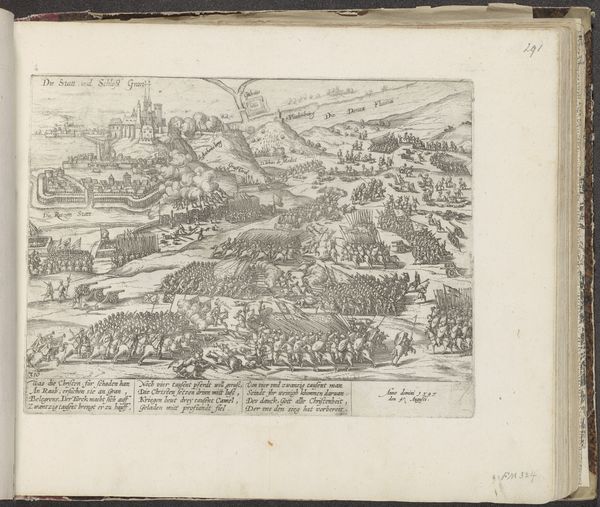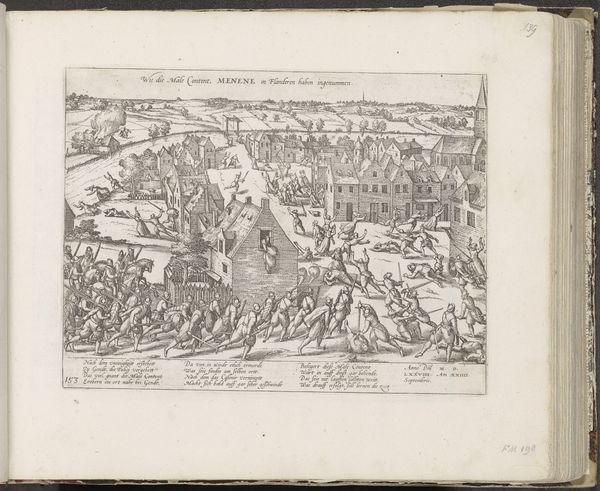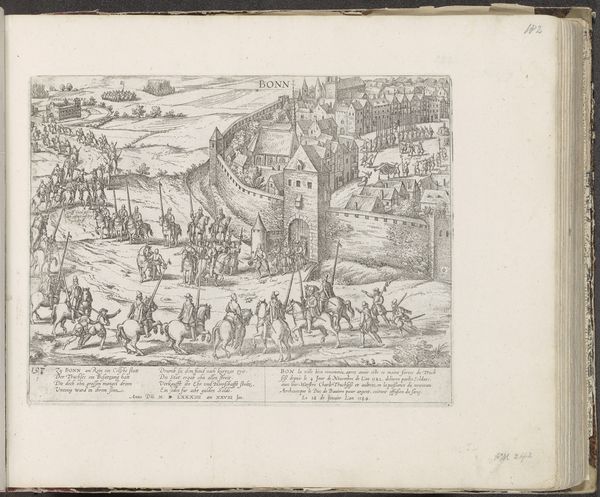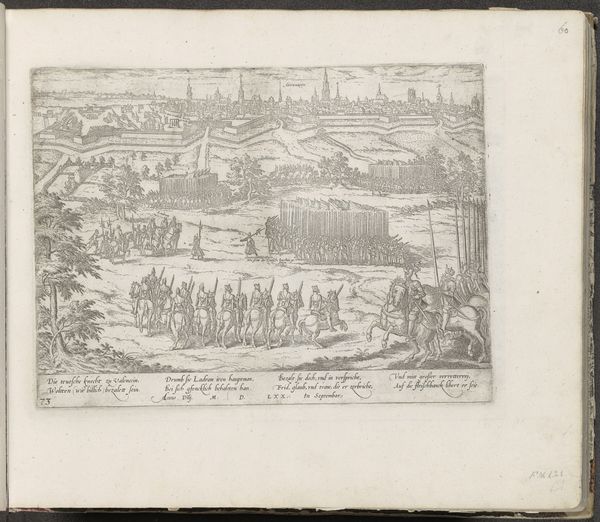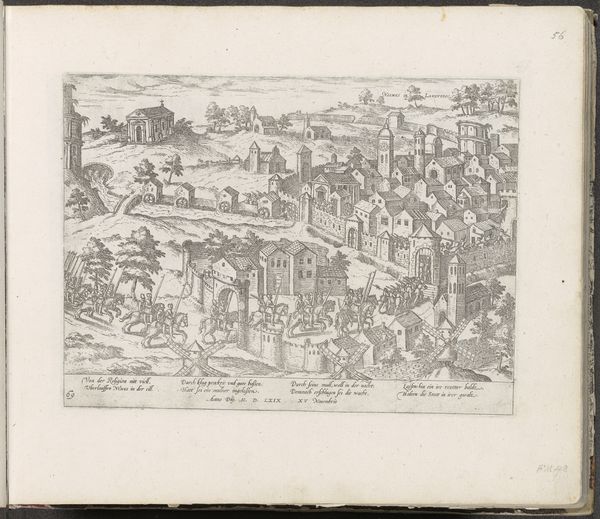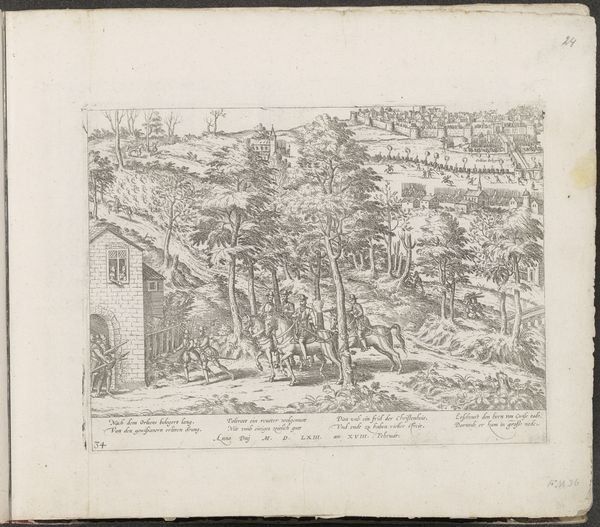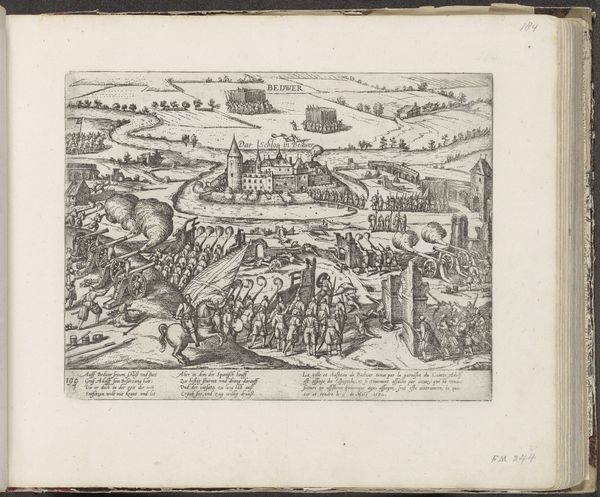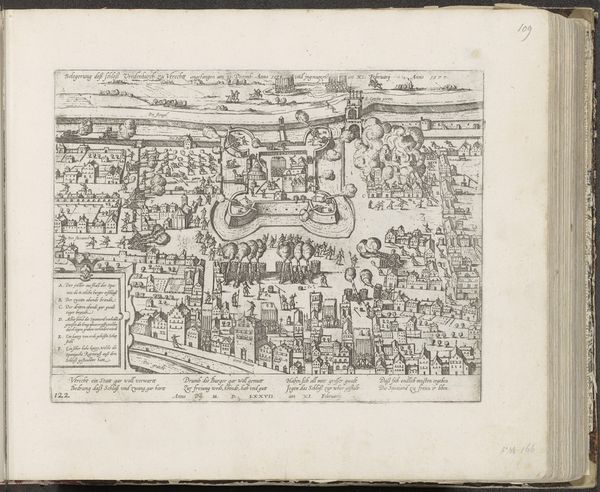
print, engraving
#
pen drawing
# print
#
line
#
cityscape
#
history-painting
#
engraving
#
realism
Dimensions: height 215 mm, width 274 mm
Copyright: Rijks Museum: Open Domain
Frans Hogenberg created this print, "Verovering van Diest," around 1580 using an engraving technique. The incised lines were made with a tool called a burin, which etches directly into the surface of a metal plate, likely copper. Ink is then pressed into these lines, and the excess wiped away. Finally, paper is pressed against the plate to receive the image. Note the incredible detail achieved through this method. The print depicts a bird's-eye view of the siege of Diest. You can see the clash of military forces outside the city walls. As a mechanical medium, printmaking was perfectly suited to disseminating such imagery far and wide, allowing news and political viewpoints to spread across Europe. Consider the labor involved here: from the mining of metals for the plate, to the making of paper, to the work of the printing press itself. This artwork is inextricably linked to the social and economic conditions of its time, a testament to how materials, making, and context are crucial to understanding the meaning of art.
Comments
No comments
Be the first to comment and join the conversation on the ultimate creative platform.
